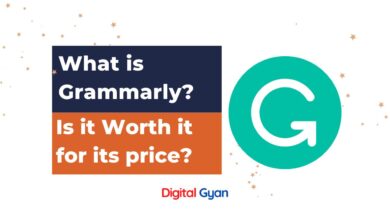How to Create a Personal Learning Plan?
Having well-defined learning goals may mean the difference between floating through facts and actually grasping a skill. A personal learning plan (PLP) is a structured roadmap that not only keeps you on track but also holds you accountable as you progress.
Whether you’re a learner, a career professional looking to upskill, or an individual seeking self-development, a personalised learning plan guarantees that your time and energy are used to attainable results. But how do you really do it?
This article will guide you through the essential steps to develop an effective and inspiring personal learning plan that is aligned with your goals, interests, and learning preferences.
1. Define Your Learning Objectives
The first and most important step is to define what you want to do clearly. Vague goals such as “I want to upgrade my skills” will result in confusion and a lack of direction. Instead, define your goals as specific, measurable, and time-bound.
- Ask yourself: What knowledge or skill do I want to acquire? Why is it important to me?
- Use the SMART criteria:
- Specific: “Learn Python programming for data analysis”
- Measurable: “Complete 3 online modules and build 2 small projects”
- Achievable: Goals must be realistic, considering your available time and resources
- Relevant: Should align with personal, academic, or career aspirations
- Time-bound: “Finish the course in 8 weeks”
Clearly defined goals create direction and provide a benchmark for tracking your progress.
2. Assess Your Current Skill Level
Before you start planning, you need to know your starting point. Conduct a self-assessment or seek feedback from a mentor, teacher, or peer.
- Questions to consider:
- What do I already know?
- Where are the gaps in my understanding?
- What has or hasn’t worked for me in past learning attempts?
This helps you avoid redundant learning and identify the areas that require more attention. It also gives you a baseline for comparison later on.
3. Identify Preferred Learning Methods
Everyone learns differently. Understanding your learning preferences can help you choose resources and techniques that maximise retention and engagement.
- Examples of learning styles:
- Visual: Charts, diagrams, videos
- Auditory: Podcasts, lectures, discussions
- Reading/Writing: Books, blogs, notes
- Kinesthetic: Hands-on projects, simulations
Additionally, consider whether you learn better independently or with others. Some learners thrive in self-paced environments, while others benefit from classroom settings or study groups.
4. Select Appropriate Resources
Once you know how you learn best, find the right materials to support your goals. These can be both formal and informal.
- Options include:
- Online courses (Coursera, edX, Udemy)
- Books and academic journals
- YouTube tutorials and podcasts
- Webinars and workshops
- Mentoring or coaching sessions
Evaluate resources based on credibility, relevance, and how well they match your preferred learning style.
5. Set a Realistic Timeline and Milestones
A common reason learners abandon their goals is unrealistic planning. Create a timeline that suits your lifestyle and breaks the goal into smaller, manageable milestones.
- Break down your learning into weekly or monthly targets
- Examples:
- Week 1–2: Learn Python basics
- Week 3–4: Complete intermediate exercises
- Week 5–6: Build first data visualisation project
- Tip: Use calendars, learning trackers, or productivity apps to stay organised
By setting short-term targets, you maintain motivation and make consistent progress.
6. Integrate Learning into Your Daily Routine
Consistency is more valuable than intensity. Instead of long, infrequent study sessions, allocate shorter, regular time slots for learning.
- Techniques:
- Time-blocking: Dedicate 30–60 minutes per day
- Habit stacking: Attach learning to an existing habit (e.g., review notes after breakfast)
- Microlearning: Break content into 5–10 minute lessons
Treat learning as a daily practice rather than an occasional task. This approach boosts retention and forms sustainable habits.
7. Apply What You Learn
Learning becomes more meaningful when applied to real-life scenarios. Practical application helps reinforce understanding and develop confidence.
- Examples:
- Create a project based on your learning
- Teach the concept to someone else
- Participate in online forums or communities
- Take on challenges (e.g., coding competitions, writing contests)
This step transforms passive knowledge into active competence.
8. Monitor Progress and Reflect
Track your achievements and reflect on what’s working or needs adjustment. Regular check-ins help keep you accountable.
- Reflection questions:
- Have I met this week’s goal?
- What did I struggle with?
- What strategies helped me understand better?
- Do I need to revise my plan?
Document your reflections in a learning journal or digital tracker. Use this feedback to refine your plan continuously.
9. Stay Motivated and Celebrate Milestones
Maintaining motivation over the long term is challenging. Recognising progress, even in small amounts, helps keep morale high.
- Reward yourself: Celebrate each milestone with something enjoyable
- Stay connected: Join online communities or learning groups
- Revisit your ‘why’: Remind yourself of the bigger purpose behind your goal
Motivation is not constant, so designing your environment and routine to support discipline is essential.
10. Review and Revise the Plan Regularly
As you evolve, your learning needs might change. Reassess your plan every few weeks or months and adjust as needed.
- Update goals: If a goal has been met, replace it with a new one
- Change resources: If a method is ineffective, try something new
- Reallocate time: Adjust your schedule based on what’s working
Learning is a dynamic process. Staying flexible ensures your plan remains relevant and aligned with your growth.
Conclusion
Developing a personal learning plan is not a once-for-all exercise but a changing process needing clarity, organization, and dedication. By establishing precise objectives, selecting the appropriate resources, and incorporating learning into your regular routine, you assume charge of your development instead of counting on chance. Ongoing reflection and real-world application guarantee that your efforts turn into clear-cut progress. Whatever your goals are, whether for academic progress, professional development, or self-enrichment, a thoughtful learning plan gives you the power to proceed with direction and confidence.



